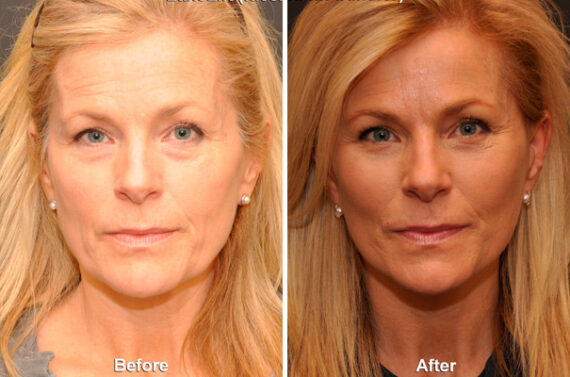A facelift can do wonders for your confidence and appearance, but the road to your new look requires careful recovery. Dr. Alexander Donath, a respected facial cosmetic surgeon, shares valuable tips to guide you through this journey. Proceed through healing with his expert advice, revealing the beauty and a vibrant reflection of health.

Essential Pre-Facelift Surgery Preparations
- Consult a board-certified plastic surgeon for a care plan suited to your facelift needs, including mini facelifts. Discuss your medical history as it affects facelift surgery and anesthesia.
- To enhance the health of your facial skin, avoid smoking and aspirin before the procedure. Listen to your surgeon’s advice on preparing for a safe surgical procedure.
- Arrange someone to help you after facial surgery to aid in your care. Mental preparation is as vital as the physical for a comfortable recovery.
The Comprehensive Facelift Recovery Timeline
The journey of recovery after a facelift, a significant cosmetic procedure, involves several stages, each crucial for the optimal healing of facelift patients. This timeline, provided by a facial plastic surgeon, offers a detailed guide through these stages, emphasizing the importance of following aftercare instructions for successful healing.
Immediate Post-Operative Period
Patients are advised to rest and limit daily activities immediately following the surgery. The facial plastic surgeon will provide specific aftercare instructions, which are vital to follow. It’s common to experience some discomfort, but prescribed medication can manage this. Patients should avoid any medications or supplements that act as blood thinners, as they can increase the risk of bleeding.
Day 1-2
Early Recovery Phase
During the first week, patients will notice swelling and bruising, which are normal aspects of the body’s healing process. It’s essential to continue limiting daily activities and avoid any strenuous tasks that could impact the healing of the surgical site. The type of facelift performed can influence the extent of swelling and bruising experienced during this stage.
Week 1
Intermediate Healing Stage
By the second week, patients typically observe a significant reduction in swelling and may feel comfortable resuming some light daily activities. However, it’s crucial to avoid any vigorous exercise or heavy lifting. The facial plastic surgeon will monitor the healing process and may adjust aftercare instructions accordingly. This stage is critical as patients transition from immediate post-operative care to more independent recovery management.
Week 2-3
Advanced Recovery Phase
During this period, most visible signs of surgery will have diminished. Patients can gradually return to most of their daily activities, including some forms of exercise, as advised by their facial plastic surgeon. It’s important to remember that internal healing is ongoing, even if external signs are less apparent.
Week 4-6
Long-Term Healing and Care (Beyond Week 6)
Most facelift patients have returned to their normal routines after six weeks. However, the healing process can continue for several months, particularly for more extensive facelifts. Regular follow-up appointments with the facial plastic surgeon are essential to ensure the recovery progresses as expected. Patients should continue to follow any specific aftercare instructions, including skincare routines and sun protection, to maintain the results of their cosmetic procedure.
Beyond Week 6
Throughout each stage of recovery, patients must communicate openly with their facial plastic surgeon, report any concerns, and strictly adhere to the provided aftercare instructions. This collaborative approach ensures the best possible outcome and a smooth transition through the various stages of recovery following a facelift.
Managing Pain and Discomfort After a Facelift
Effective pain management is key for a smooth facelift recovery process following a facelift. It’s common to feel some discomfort and pain as the anesthesia wears off. To ease pain, follow these tips:
- Apply cold compresses to reduce swelling.
- Elevate your head to minimize throbbing.
- Stay hydrated and eat well to aid healing.
- Always use pain medication as directed by your surgeon.
These simple steps will help manage pain and ensure a more comfortable recovery.
Aftercare is key after a facelift. Surgeons stress the need for follow-up care for proper healing. Care for incisions well to avoid infection and ensure scars are less visible. Avoid sun exposure to prevent incision sites from darkening. Essential steps include:
- Stick to the care plan your surgeon gave you.
- Keep incisions clean and watch for any issues.
- Go to all follow-up care appointments for checks.
- Stay out of the sun and use sunscreen as instructed.
Nutritional Support for Enhanced Facelift Healing
Good nutrition is key to fast healing after a facelift. Eat a balanced diet with vitamins and proteins to help your skin repair. Vitamin C and A, plus protein, reduce excess skin and scars.
Drinking plenty of water is crucial for keeping your skin flexible and strong. Avoid processed foods and sugars, as they can slow skin recovery.
For better healing, include:
- Lean proteins like chicken or fish
- Fruits and veggies with antioxidants
- Whole grains for energy
- Plenty of water for hydration
Guidelines for Physical Activity During Facelift Recovery
In the first week after your facelift, rest well to help with healing and lessen swelling. Slowly start adding normal activities back into your routine, but be gentle to avoid harming the healing cuts.
Light activity is usually safe by the second week, but keep your blood pressure in check to aid recovery. Avoid any strenuous activity that might hurt your face.
Between the third and fourth weeks, you can do moderate exercise but avoid any strenuous exercise that could cause problems. Always talk to your surgeon before getting back into heavy physical activity. Following this advice will help promote a safe recovery.

Importance of Follow-Up Care in Assessing Healing Progress
Follow-up care is key in managing the healing process after a facelift. Surgeons schedule a visit the day after surgery to check incisions and look for swelling and bruising. These checks help to ensure a smooth recovery and reduce downtime.
Regular follow-up care helps both patients and surgeons to track healing progress. It’s not just routine; it’s a necessary part of the healing journey.
Ensuring Emotional Well-being During Facelift Recovery
Recovering from a facelift is both a physical and emotional process. It’s important to look after your emotional well-being as you heal from surgery to remove excess and loose skin. The downtime after the operation can cause mixed feelings, such as excitement for the results or worry about the healing and risks involved.
To aid your recovery:
- Engage in calming activities
- Seek support when necessary
Optimizing Home Recovery for a Seamless Facelift Healing Journey
Arrange a comfortable space to recuperate from a facelift with everything you need nearby. Keep movement to a minimum to avoid straining healing areas. Elevate your head to help with swelling and speed up the healing of residual swelling. Have soft foods on hand that are easy to eat during recovery. Mini facelifts can offer a less demanding recovery process.
Take these steps to have a smoother experience in the weeks after surgery and enjoy a peaceful healing downtime.
Sustaining Results: Long-term Care After a Facelift
A facelift or mini facelifts can offer a more youthful appearance, but their effects need continuous care. The natural aging process will not stop; however, a healthy lifestyle can slow down facial aging.
To maintain facelift results, consider these actions:
- Use sunscreen to protect against premature aging.
- Follow a skincare routine to keep your skin hydrated.
- Eat well and exercise to sustain skin elasticity.
- Avoid smoking to protect the benefits of your cosmetic surgery.
Invasive facial procedures can’t stop time. Regular visits to plastic surgeons help adjust your upkeep routine. This way, the areas around your chin can stay refreshed. Everyday choices influence the lasting impact of plastic surgery.
Embarking on your facelift journey can be transformative, and expert guidance ensures a safe and effective recovery. Dr. Alexander Donath specializes in helping patients achieve their aesthetic goals with personalized care. His expertise in facelift recovery is your resource for optimal healing.
Take your first step towards a rejuvenated appearance by scheduling a consultation with Dr. Donath. Experience dedicated support and professional advice tailored to your transformation needs. Contact us today and embrace the change with confidence.


